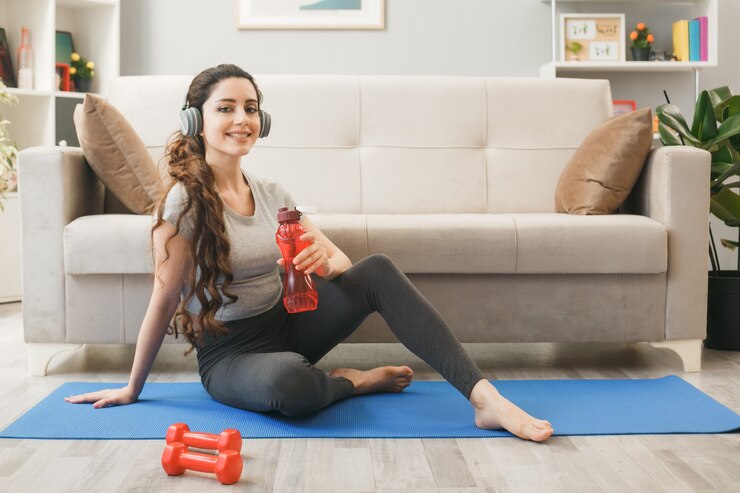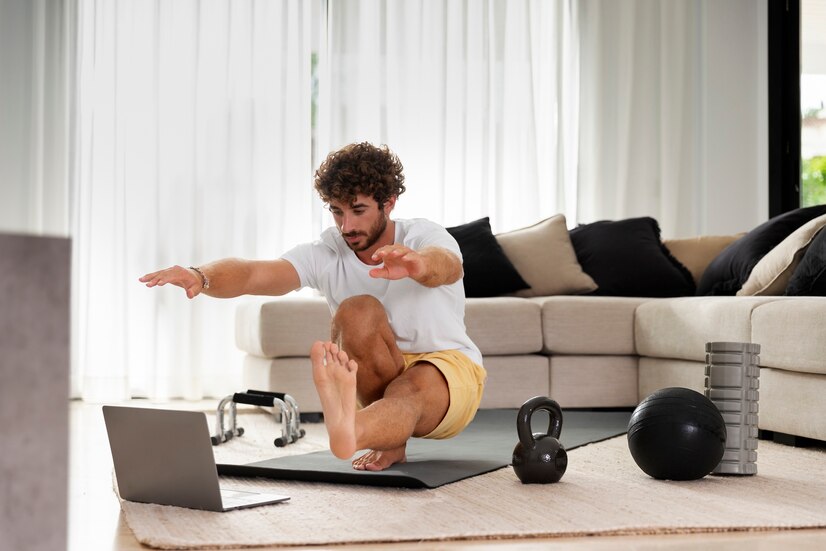
Home workouts for beginners offer a unique blend of personalization and privacy making them an ideal choice for fitness enthusiasts of all levels. With the flexibility to tailor exercises to individual needs and preferences these workouts accommodate various goals like weight loss, muscle toning or general well being fitting seamlessly into any daily routine and space be it a small apartment or a larger area.
For men starting their fitness journey should visit Home Workout for Beginners Male for male-specific routines and advice. Similarly our Home Workout for Beginners Female guide offers targeted workouts and tips catering to women’s unique fitness needs.
Why Home Workout For Beginners Are a Great Choice for Fitness
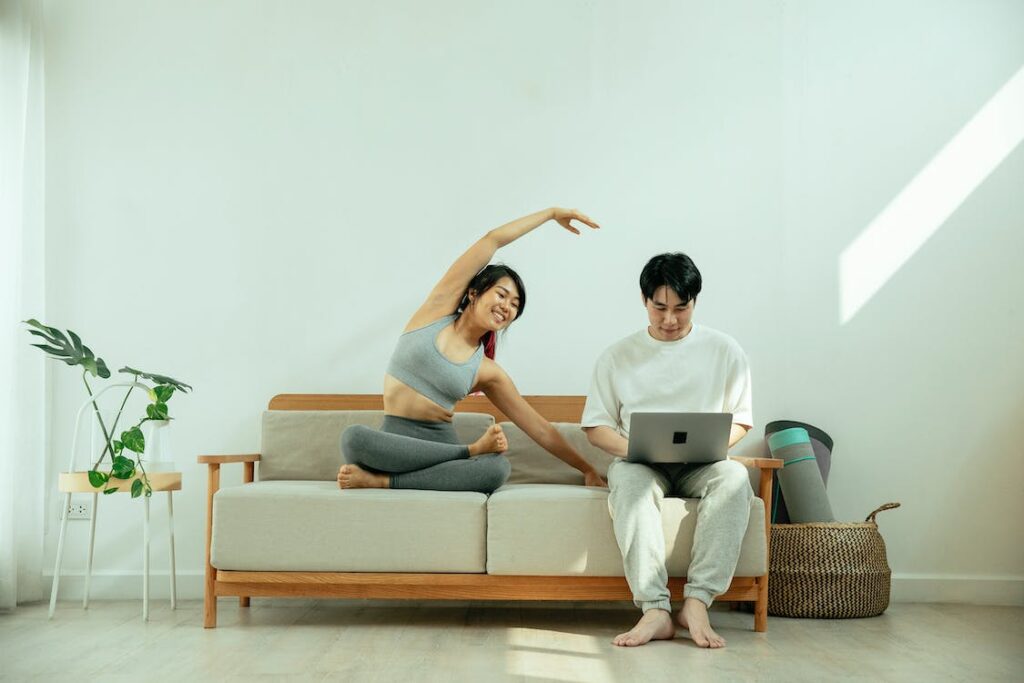
Easy Access and Time Saving Convenience:
One of the biggest reasons to choose home workout for beginners is how easy and flexible they are. You can exercise whenever you want which is great if you have a busy schedule. This means no more worrying about gym hours or spending time and money on travel. At home you’re the boss of your workout space.
There’s no waiting around for machines or equipment, so you can start your workout right away, any time of the day. Whether it’s a quick session before breakfast or a longer workout in the evening you have the total freedom to fit exercise into your day however it works best for you.
A Private and Comfortable Environment:
Home Workout for beginners is also really good for anyone who feels a bit nervous or shy about exercising in public places like gyms. At home you’re in a space that’s familiar and private where you can relax and focus on your workout without worrying about other people.
This is especially helpful if you’re just starting out and might not be too sure about how to do all the exercises yet. In your own space you can try new things, go at your own speed and not feel rushed or judged. This comfortable setting helps a lot in keeping you motivated and sticking with your workout plan. When you feel good and confident in your workout space, you’re more likely to keep up with your fitness goals and enjoy your exercise routine.
Another benefit of home workout states by Centers for Disease Control and Prevention (CDC), that:
“Doing a variety of physical activity improves physical function and decreases the risk of falls or injury from a fall. Include physical activities such as aerobic, muscle strengthening, and balance training. Multicomponent physical activity can be done at home or in a community setting as part of a structured program.”
The reference is taken by Benefits of Physical Activity – CDC
Getting Started with Home Workout For Beginners
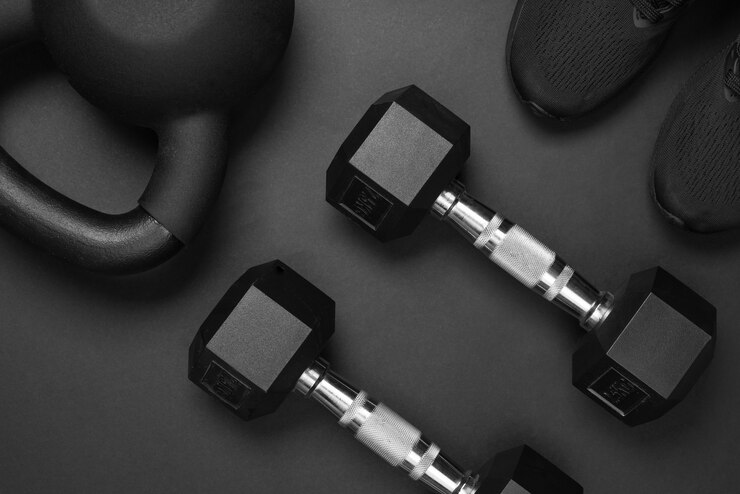
Equipment Options:
- Starting Simple With Bodyweight Exercises: If you’re just beginning, there’s no need for equipment. You can get a solid workout using just your body. Exercises like push-ups, squats and lunges are effective for building strength and endurance without any gear. These exercises are not only convenient but also help you get familiar with the basics of movement and form.
- Adding Basic Equipment: Once you’re comfortable with bodyweight exercises you might want to enhance your workout with some basic gear. A yoga mat is great for comfort especially during floor exercises. Resistance bands offer a versatile way to add resistance to your workouts and they’re compact and easy to store. A set of dumbbells or kettlebells can further diversify your strength training. These items are relatively inexpensive and don’t require much space making them perfect for home workout for beginners.
- Building Your Home Gym: For those who are more committed and have the space setting up a home gym can take your training to the next level. This might include equipment like a stationary bike, treadmill or a weight bench. Having a variety of equipment at home can keep your workouts diverse and challenging and it allows you to incorporate more advanced training techniques.
Designing Your Home Workout Routine:
When starting Home workout for beginners, aim for manageable workout sessions, gradually building up in length and intensity. Ensure to include rest days for recovery. This approach to workout design is supported by Everyday Health, which outlines the importance of a balanced routine that includes both aerobic and strength training exercises
- Frequency And Duration: Begin with workout sessions that are manageable in length around 45 minutes to an hour and ensure you have rest days to allow for recovery. Starting with shorter sessions helps to build a habit without overwhelming your body or schedule.
- Choosing Exercises: Aim for a balanced routine that targets all the major muscle groups. Incorporate a variety of exercises including HIIT for cardiovascular fitness and strength training for muscle building and endurance. HIIT involves short intense bursts of activity followed by rest while strength training can include weight lifting or bodyweight exercises.
- Warm Up & Cool Down: Always start with a warm up to prepare your body for exercise and reduce the risk of injury. This can be light jogging, jumping jacks or dynamic stretching. After your workout, cool down with some light stretching or a slow walk to help your body recover and reduce muscle soreness.
Essential Beginner Exercises
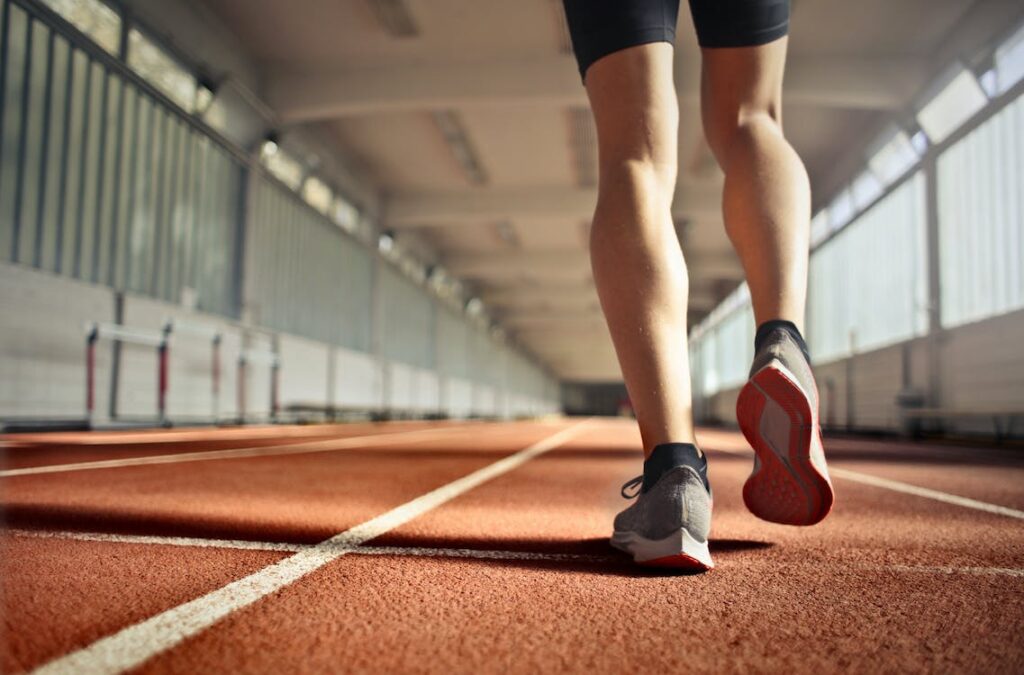
Cardio Workouts:
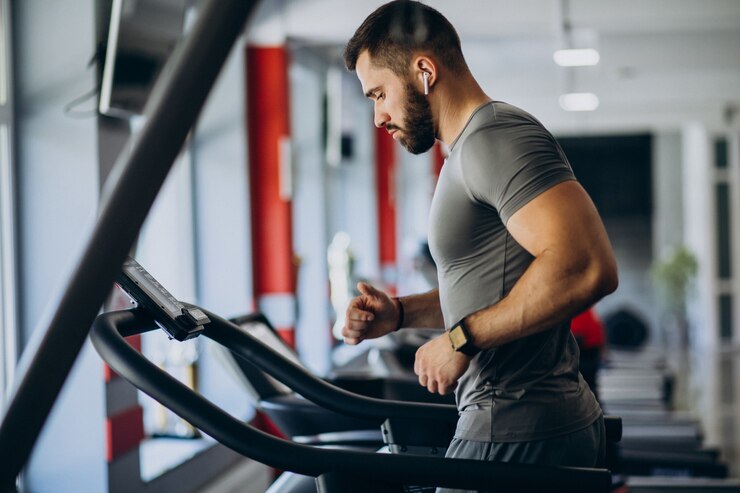
– High Intensity Interval Training (HIIT):
A dynamic and efficient way to boost your heart rate and burn calories. HIIT involves short bursts of intense exercise followed by brief periods of rest. For beginners, simple exercises like jumping jacks or high knees can be incorporated into HIIT. These exercises increase your heart rate, improving cardiovascular health and endurance.
– Jumping Jacks:
An excellent full-body cardio exercise. Stand with your feet together, then jump while spreading your legs and raising your arms above your head. Jump back to the starting position and repeat. It’s a great way to get your heart pumping and muscles warmed up.
– Burpees:
A challenging yet rewarding exercise. Start in a standing position, drop into a squat with your hands on the ground, then kick your feet back into a plank position. Quickly return to the squat and jump up. Burpees work almost every muscle group while providing cardiovascular benefits.
– Running in Place:
A straightforward and effective cardio exercise. Simply run in place, lifting your knees high. It’s an excellent way to raise your heart rate without needing much space or any equipment.
– Low Impact Cardio Options:
For those who prefer gentler exercises, walking, swimming, or cycling are excellent low-impact cardio options. They are easier on the joints while still providing good cardiovascular benefits.
Strength Training For Beginners:

– Squats:
A fundamental exercise for building lower body strength. Stand with your feet shoulder-width apart, then bend your knees and lower your body as if sitting in a chair. Keep your back straight and knees over your toes. Rise back up and repeat. Squats primarily target your thighs, hips and buttocks.
– Lunges:
Great for working the thighs and buttocks. Step forward with one leg and lower your hips until both knees are bent at about a 90-degree angle. Make sure your front knee is directly above your ankle. Push back up to the starting position and alternate legs.
– Push Ups:
Ideal for upper body strength, particularly the chest, shoulders and triceps. Begin in a plank position, lower your body until your chest nearly touches the floor then push yourself back up. Beginners can start with modified push-ups, either on their knees or against a wall.
– Crunches:
A classic exercise for strengthening the core. Lie on your back with your knees bent and feet flat on the floor. Cross your arms over your chest, lift your upper body towards your knees, then slowly lower back down.
– Planks:
Excellent for core stability. Hold yourself in a push-up position, either on your hands or elbows, keeping a straight line from head to heels. Aim to hold the position for 20-30 seconds, gradually increasing the time as you gain strength.
– Glute Bridges:
Focus on the buttocks and lower back. Lie on your back with your knees bent and feet flat. Lift your hips off the ground until your knees, hips and shoulders form a straight line. Squeeze your glutes at the top and then return to the starting position.
Flexibility and Core:
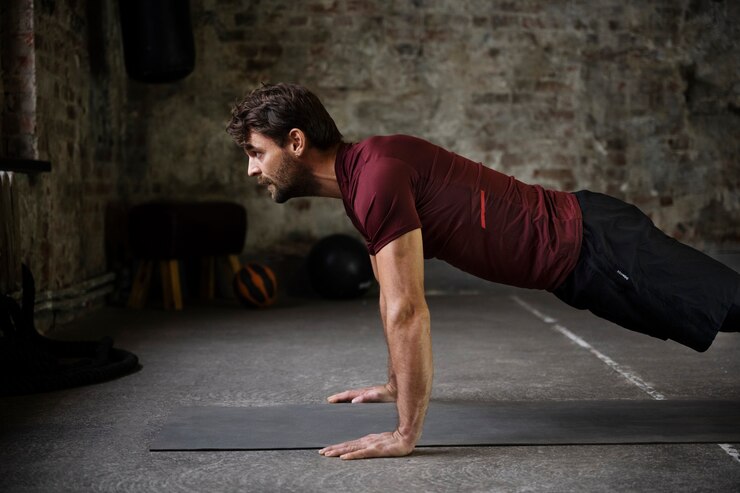
– Yoga Poses:
Incorporating yoga into your routine can significantly enhance flexibility and core strength. Poses like Downward-Facing Dog, Cat-Cow and Child’s Pose are great for beginners. They help stretch various muscle groups while also providing a relaxing and mindful exercise experience.
– Pilates Exercises:
Pilates is excellent for core strengthening and flexibility. Exercises like crunches, leg lifts and side planks are effective for targeting the core muscles. They also improve balance and overall body coordination.
– Stretching Tips:
Both dynamic and static stretching are important. Dynamic stretches are active movements where joints and muscles go through a full range of motion. They are great as part of a warm-up. Static stretches involve holding a position for a period of time and are ideal for cooling down after a workout.
Staying Motivated And Consistent with Home Workouts For Beginners
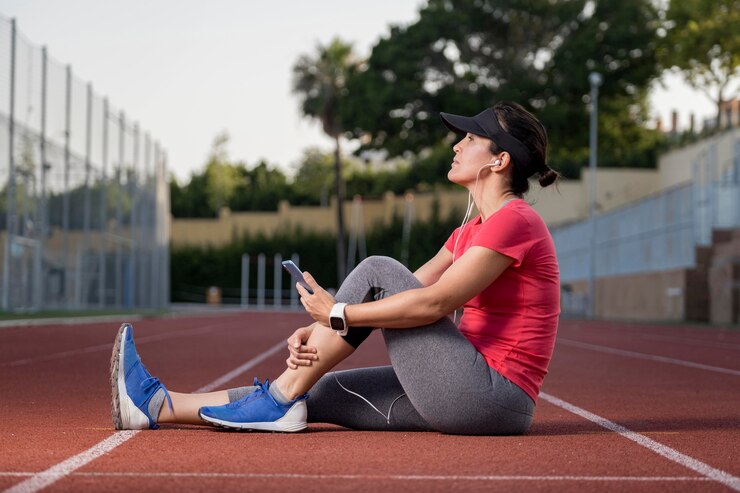
Making home workout For Beginners enjoyable and consistent is key to long-term fitness success. The Monday Campaigns highlight several benefits of home workouts such as the convenience and flexibility they offer which are crucial for maintaining a regular exercise routine
Setting SMART Goals:
When you’re working out at home, it’s really important to set goals that are clear and achievable. This is where SMART goals come in. SMART stands for Specific, Measurable, Achievable, Relevant and Time-bound.
This means your goals should be very clear (like being able to run for 30 minutes without stopping), something you can measure (like the number of push-ups you can do), achievable (it’s something you can realistically do), relevant (it matters to you and your fitness journey), and time-bound (you have a deadline, like achieving it in the next three months). Having these kinds of goals keeps you focused and helps you track your progress.
Tracking Your Progress:
- Workout Journal: Keeping a workout journal is a great way to see how far you’ve come. You can write down what exercises you did, how long you worked out, and how you felt afterward. This not only helps you stay on track but also allows you to look back and see all the improvements you’ve made over time, which can be really motivating.
- Celebrating Milestones: Every step forward is worth celebrating. Did you finally run that extra mile, or lift a heavier weight than before? Celebrate it! Recognizing these milestones, no matter how small, helps keep you motivated. It’s important to acknowledge the hard work you’re putting in. This could be as simple as treating yourself to a movie night or getting that workout gear you’ve been eyeing.
Making It Fun:
- Workout Companions: Working out with a friend or family member can make exercising more enjoyable. It’s a great way to spend time together while keeping each other motivated. Plus, having someone else in your fitness journey can make you more accountable for sticking to your workout routine.
- Entertainment: Listening to your favorite music or an interesting podcast can make your workouts fly by. It can also help you keep a good rhythm during exercises like running or cycling. Music and podcasts can be a great source of motivation and can make your workout sessions something to look forward to.
- Variety: Keep things interesting by mixing up your workouts. Trying out different exercise classes, like yoga, dance or aerobics can add variety to your routine and prevent boredom. Online platforms offer numerous options for at-home classes. Challenges like a 30-day squat challenge or a virtual 5k run can also add an exciting element to your fitness journey.
By incorporating these strategies home workout for beginners becomes more manageable, convenient and enjoyable. Remember, the key to long-term success is finding joy in the process and celebrating every step of progress along the way.
Resources and Recommendations for a Successful Home Workout Journey
Beginner Friendly Fitness Resources
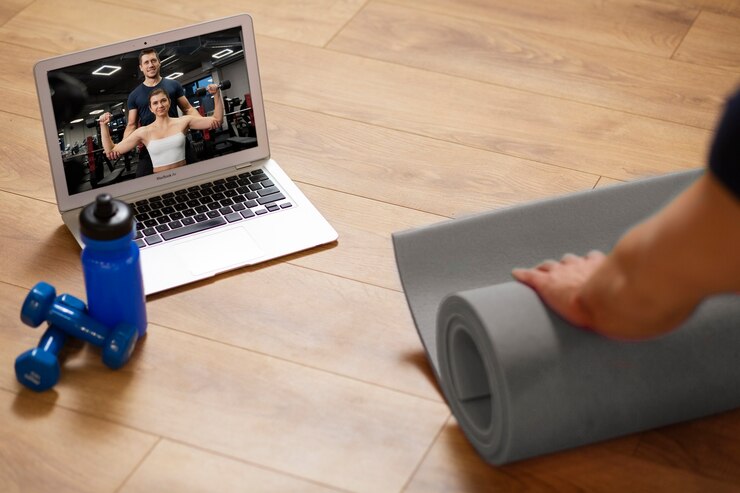
- YouTube Workout Tutorials: There are tons of free tutorials on YouTube that are perfect for Home workout for beginners. These videos range from short, 10-minute routines to longer, more intensive sessions. You can find workouts that don’t require any equipment, yoga sessions, cardio exercises, strength training and more. Look for channels that focus on beginner workouts, so you can follow along without feeling overwhelmed.
- Online Fitness Communities: Joining an online fitness community can be incredibly helpful. These platforms are great places to find support, motivation and advice from people who are on the same fitness journey as you. You can share your progress, ask questions and get tips from more experienced members. These communities often host challenges and provide resources that can keep you engaged and motivated.
Healthy Eating Tips:
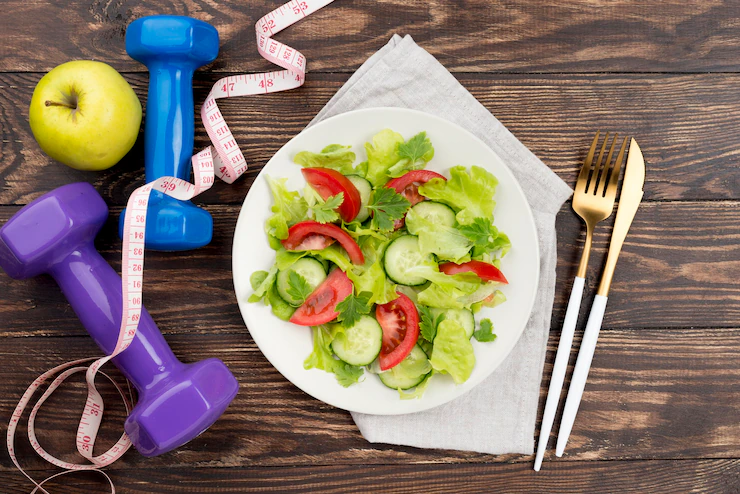
– Balanced Diet:
Eating right is just as important as your workout. Try to eat a balanced diet that includes a mix of fruits, vegetables, lean proteins, whole grains and healthy fats. This kind of diet will give you the energy you need for your workouts and help your body recover and build muscle afterward. If you’re not sure where to start, there are many nutrition guides and meal plans available online specifically designed for fitness enthusiasts.
– Hydration:
Drinking enough water is crucial, especially when you’re exercising. It helps keep your body functioning properly during workouts and aids in recovery afterward. Try to drink water throughout the day not just when you’re exercising. A good rule of thumb is to drink when you’re thirsty and make sure your urine is light in color.
Mind Body Wellness:
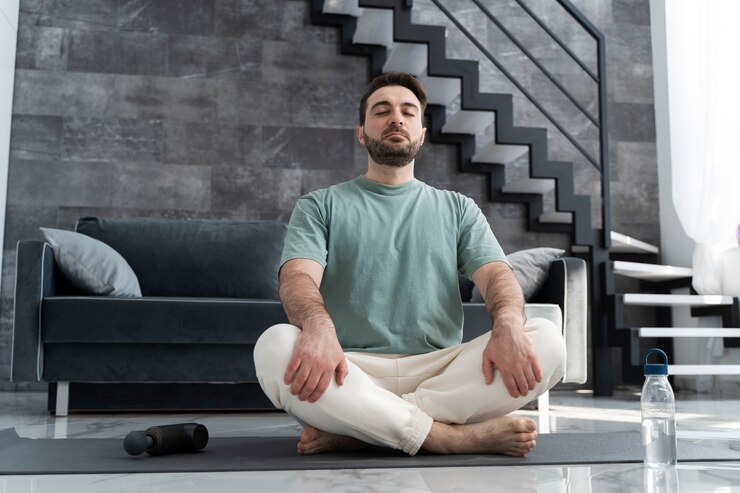
– Importance of Sleep and Stress Management:
Getting enough sleep and managing stress are vital parts of your fitness journey. Aim for 7-9 hours of sleep per night, as it helps with muscle recovery and keeps your energy levels up. Find ways to manage stress, like reading, spending time outdoors or doing hobbies you enjoy. Lower stress levels can improve your overall health and make it easier to stick to your fitness routine.
– Mindfulness Practices:
Including mindfulness or meditation in your daily routine can have a big impact on your fitness journey. These practices can help improve your focus, reduce stress and promote a sense of peace and well-being. You can find guided meditation sessions online, which are great for beginners. Even just a few minutes of mindfulness each day can make a big difference.
Utilizing these resources and tips can significantly enhance your home workout experience. They provide guidance, support, and extra motivation to help you stay on track with your fitness goals. Remember, your fitness journey is not just about physical activity; it’s also about taking care of your overall health and well-being.
Conclusion
In conclusion, home workout for beginners is a journey which filled with rewarding milestones just waiting to be achieved. Remember, every great journey begins with a single step and your fitness path is no different. Home workouts offer a world of convenience and comfort, making them an ideal choice for anyone hesitant to begin. Whether you’re doing simple stretches, bodyweight exercises or exploring various fitness videos, each small effort counts towards a bigger, healthier change.
With the flexibility to choose when and how you exercise, the journey becomes less about rigorous routines and more about enjoying each movement at your own pace. So, take that first step with confidence and a dash of excitement. There’s a whole community out there cheering you on, and with each little workout, you’re not just building strength and endurance, but you’re also crafting a happier, healthier you. Let’s embrace this adventure with open arms and an eager heart!

